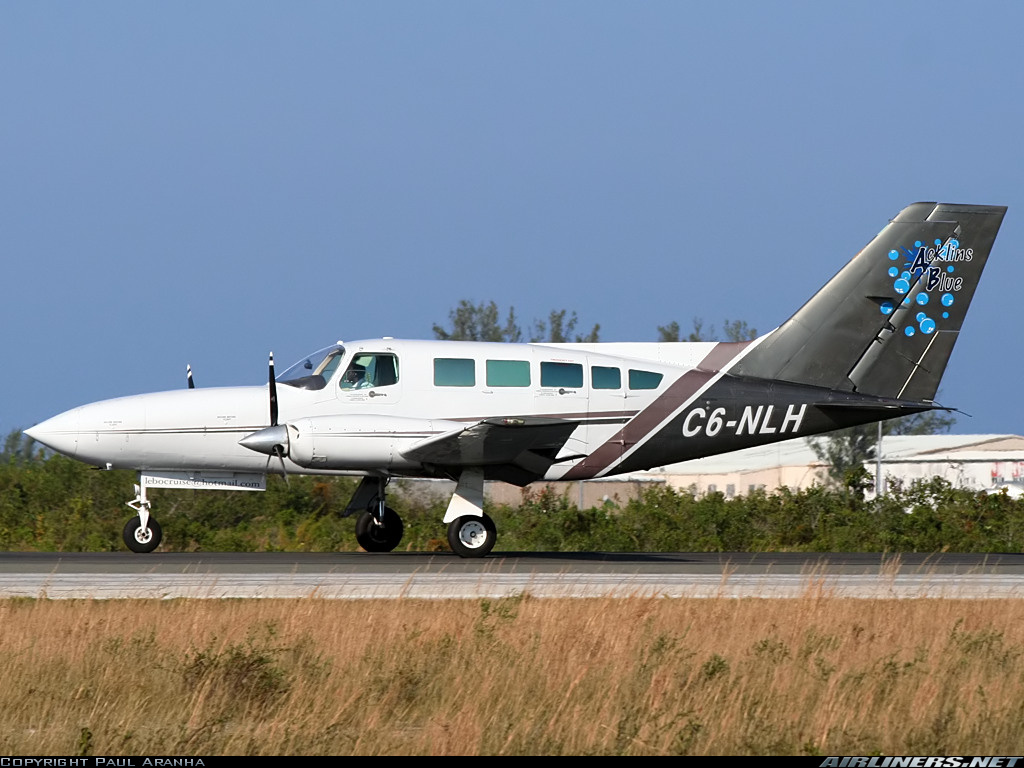Country
Crash of a Cessna 402B in Stuart
Date & Time:
Mar 14, 2014 at 1730 LT
Registration:
N419AR
Survivors:
Yes
Schedule:
Fort Pierce - Stuart
MSN:
402B-0805
YOM:
1974
Crew on board:
1
Crew fatalities:
Pax on board:
0
Pax fatalities:
Other fatalities:
Total fatalities:
0
Captain / Total hours on type:
8000.00
Aircraft flight hours:
5860
Circumstances:
According to the pilot, he checked the fuel gauges before departure and believed he had enough fuel for the flight. As he approached his destination airport, he was instructed by an air traffic controller to enter a 2-mile left base. About 3 miles from the airport, the controller advised him to intercept a 6-mile final. About 1 1/2 miles from the runway, the left engine “quit.” The pilot repositioned the fuel valve to the left inboard fuel tank and was able to restart the engine, but, shortly after, the right engine “quit.” He then attempted to reposition the right fuel valve to the right inboard fuel tank to restart the right engine, but the left engine “quit” again, and the pilot subsequently made a forced landing in a field. An examination of the engine and airplane systems revealed no anomalies that would have precluded normal operation. The left wing fuel tanks were found empty. The right wing was found separated from the fuselage. No evidence of fuel was noted in the right wing fuel tanks, and no evidence of fuel leakage was found at the accident site. The pilot reported that he saw fuel leaking out of the right wing fuel vent after the accident; it is possible that a small quantity of the airplane’s unusable fuel for the right tank could have leaked out immediately after the accident. Although the pilot believed that the airplane had enough fuel onboard for the flight, his assessment was based on his calculations of the airplane’s fuel burn during several short flights he made after having the airplane topped off with fuel the night before the accident; he did not visually check the fuel level in the tanks before departing on the accident flight. The lack of fuel in the fuel tanks, the lack of evidence of fuel leakage, the loss of engine power in both engines, and the lack of mechanical anomalies are consistent with fuel exhaustion.
Probable cause:
The pilot’s improper preflight planning and fuel management, which resulted in a total loss of power in both engines due to fuel exhaustion.
Final Report:
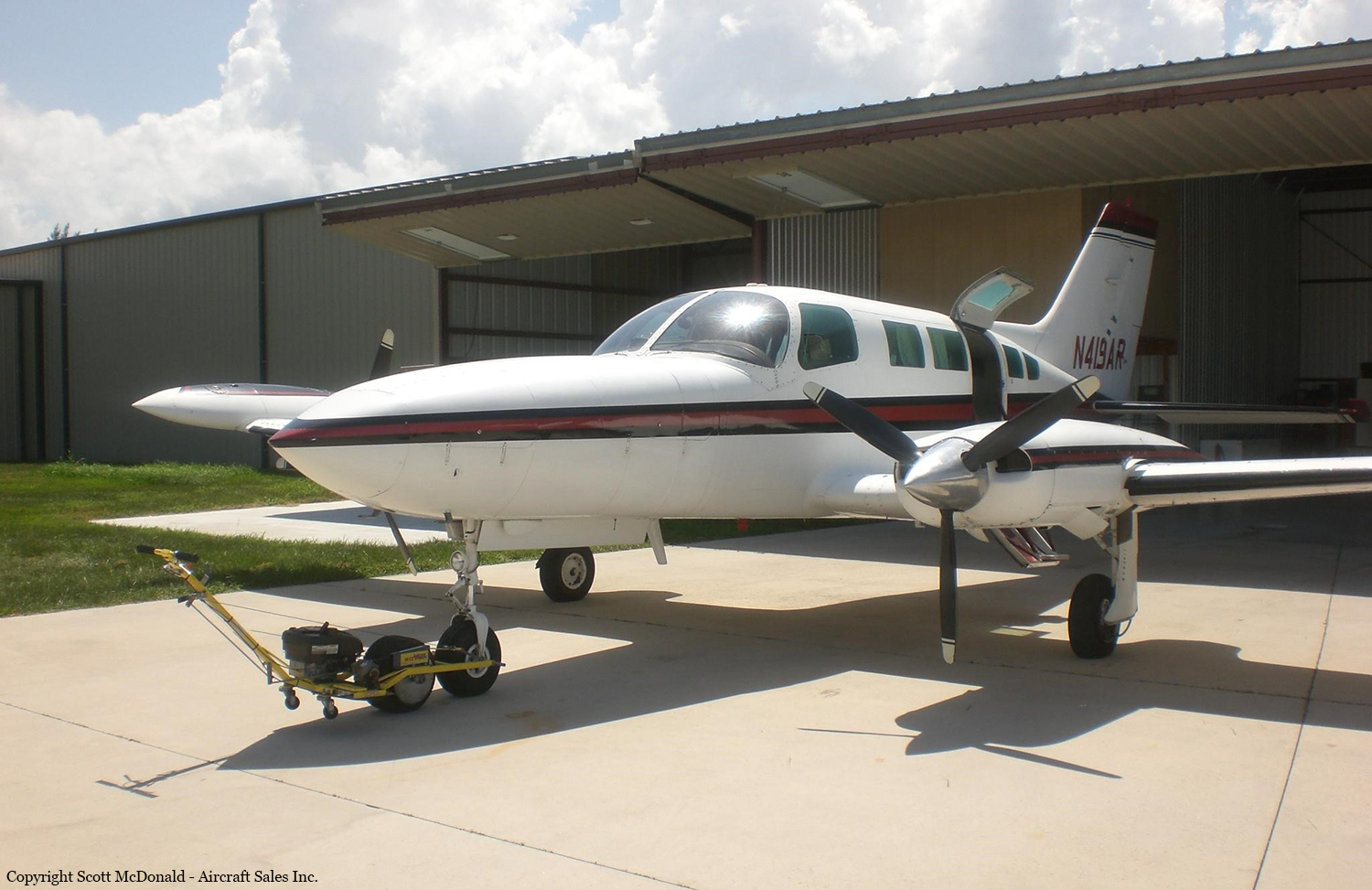
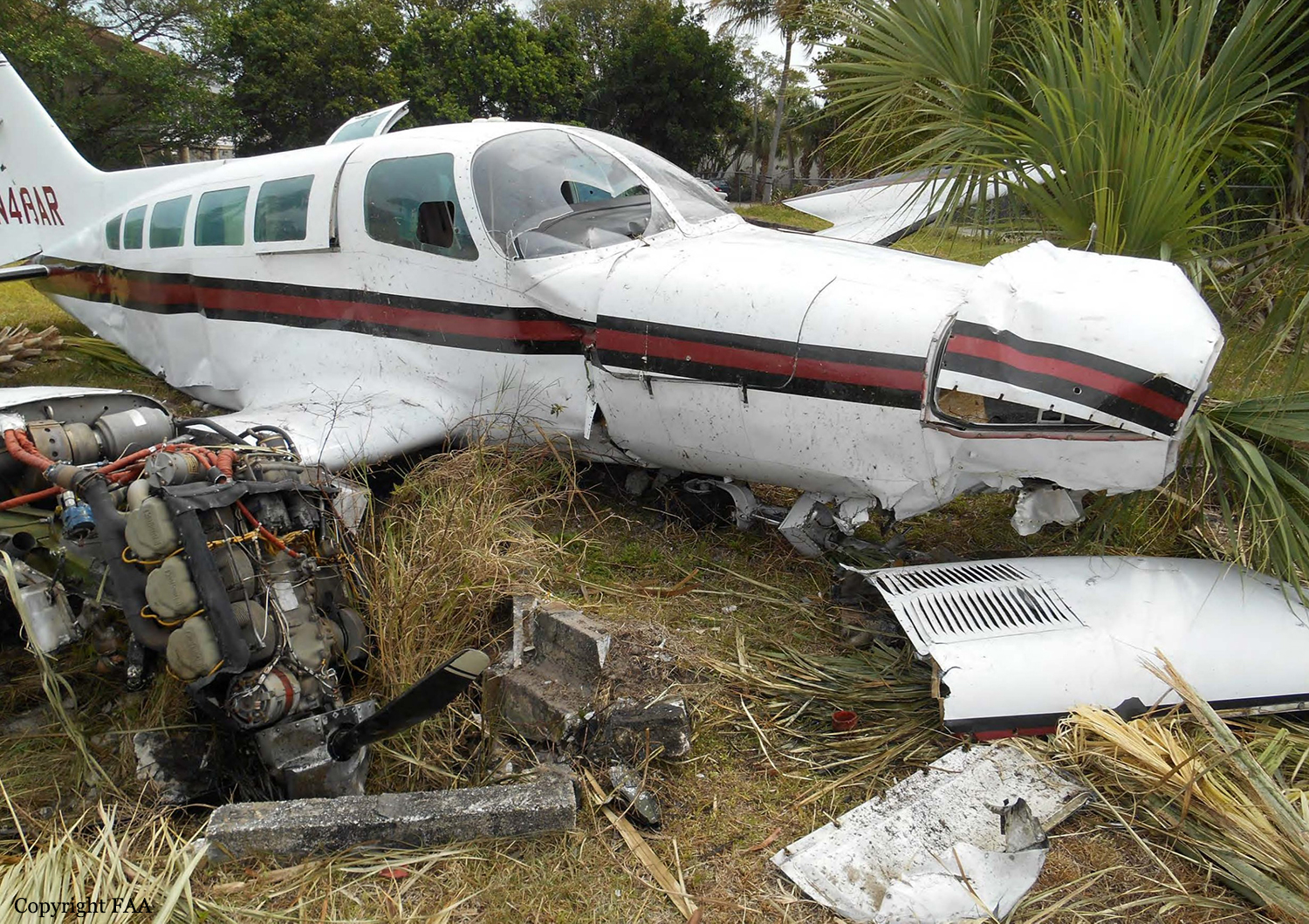
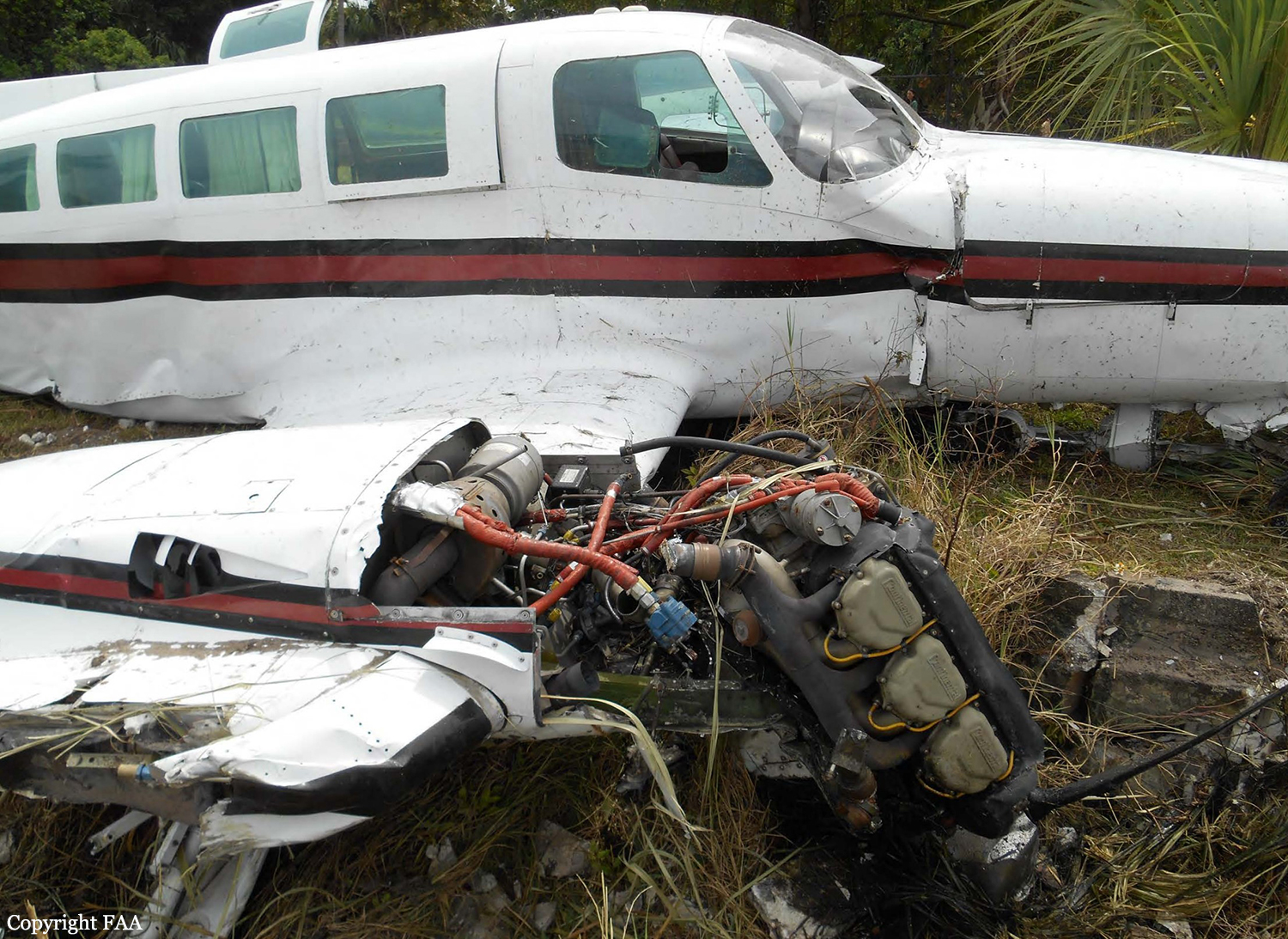
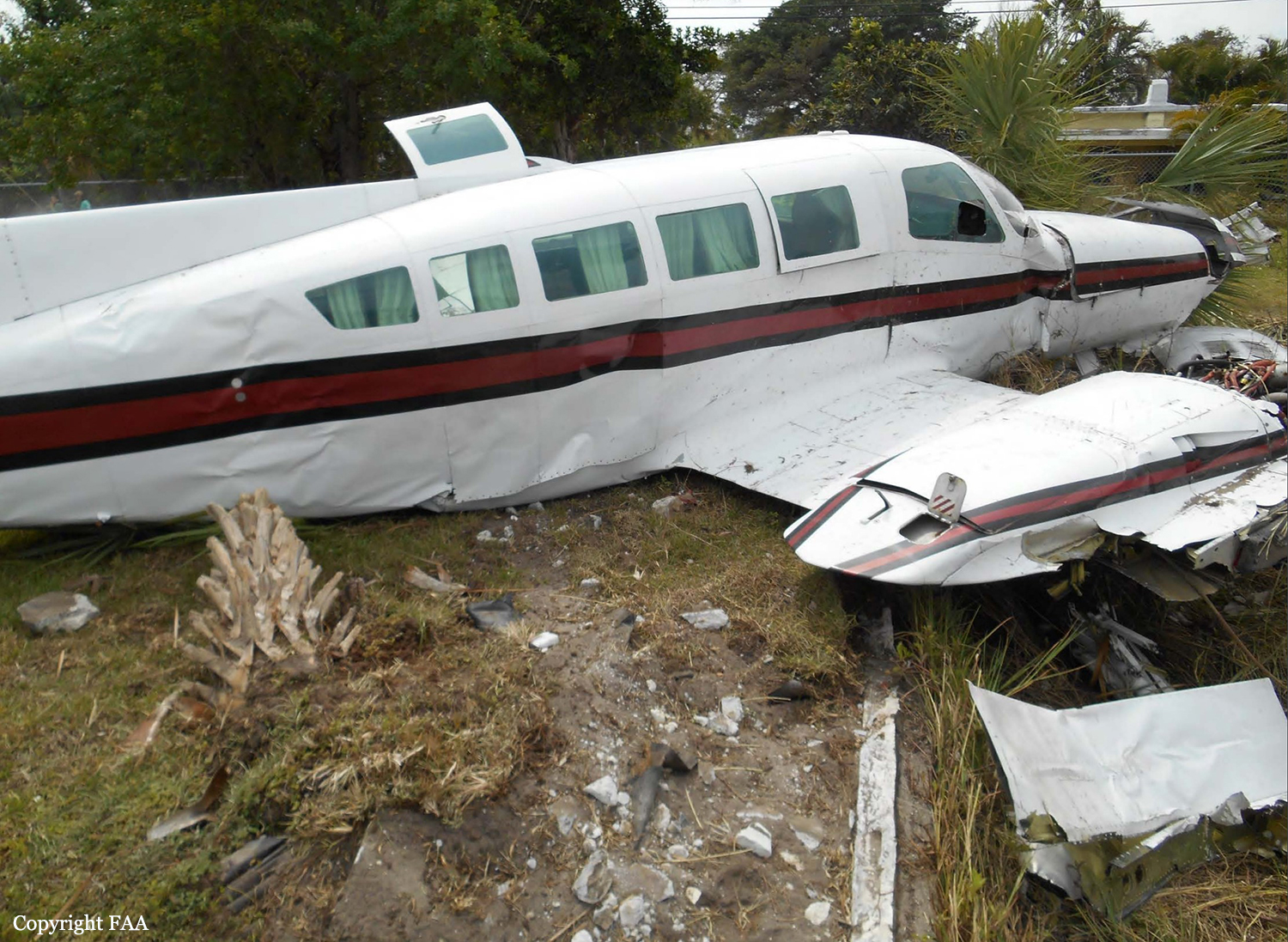
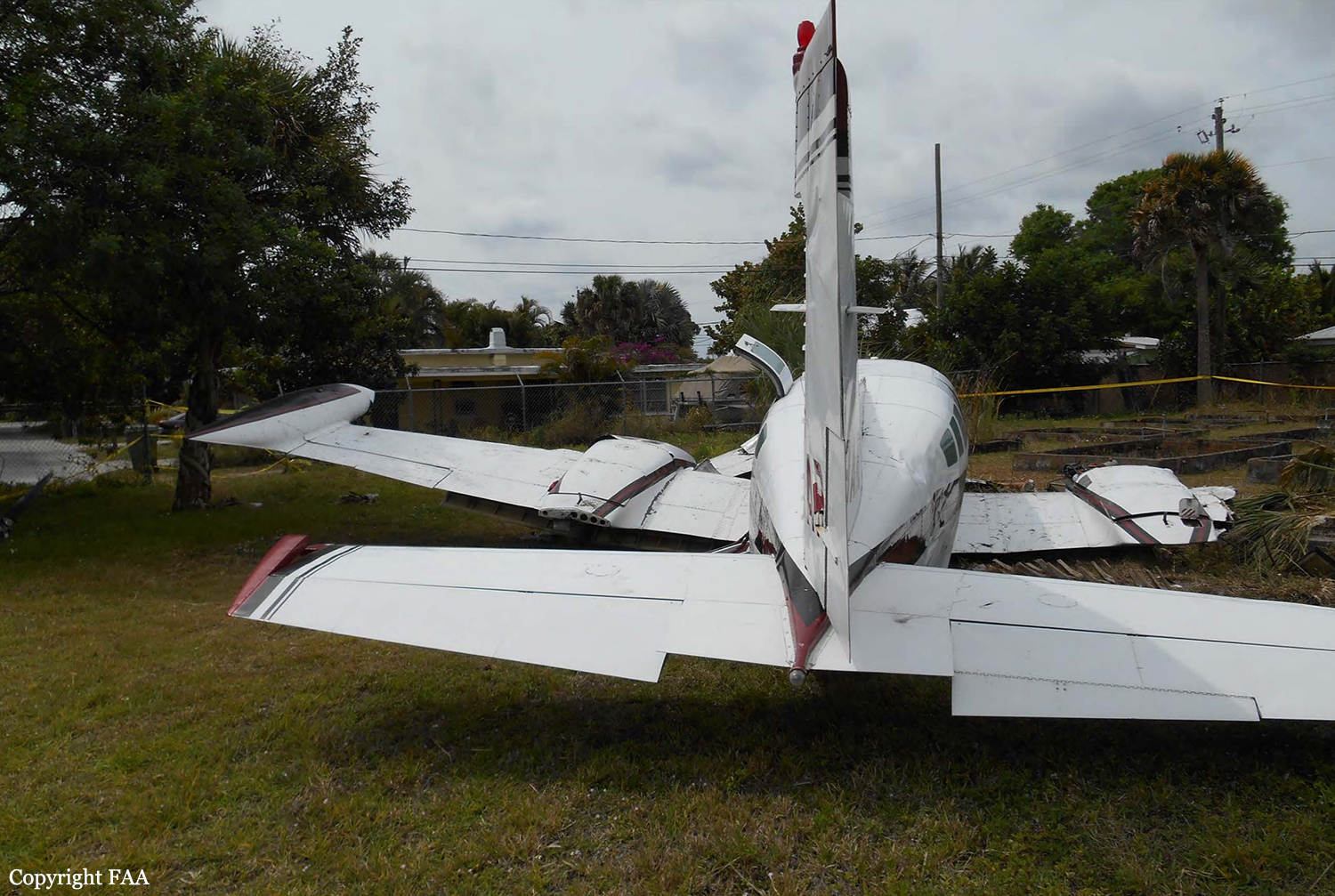
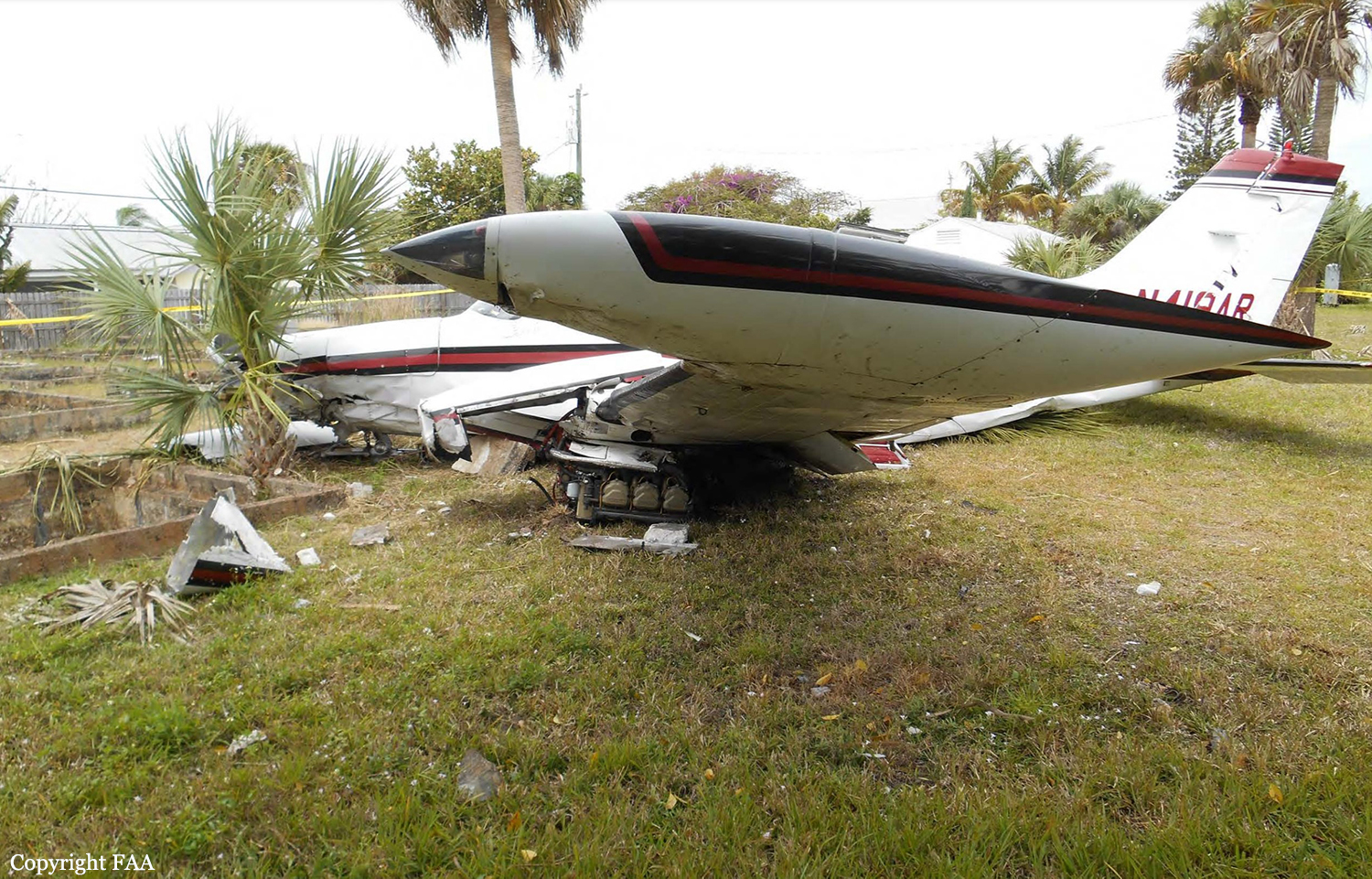
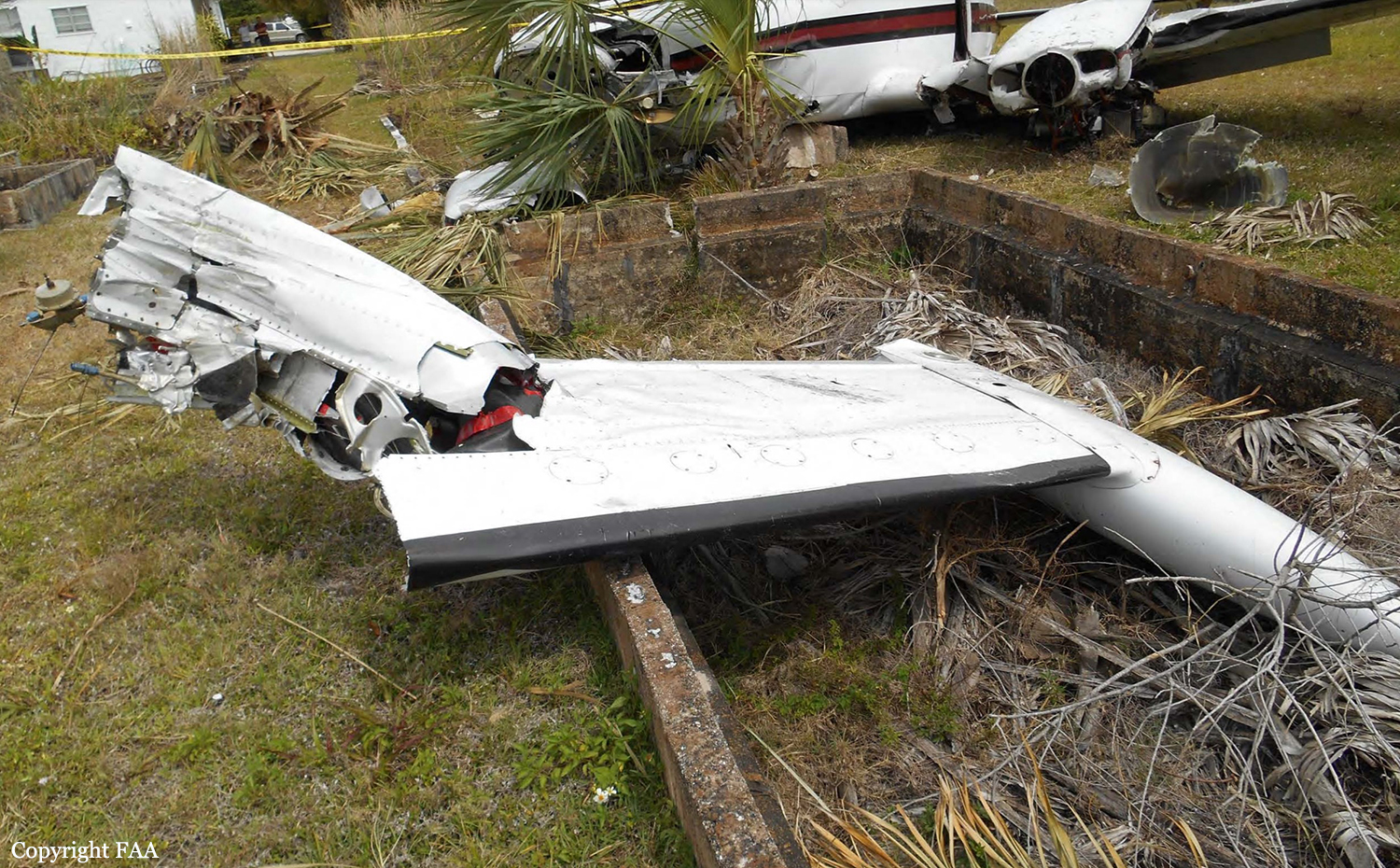
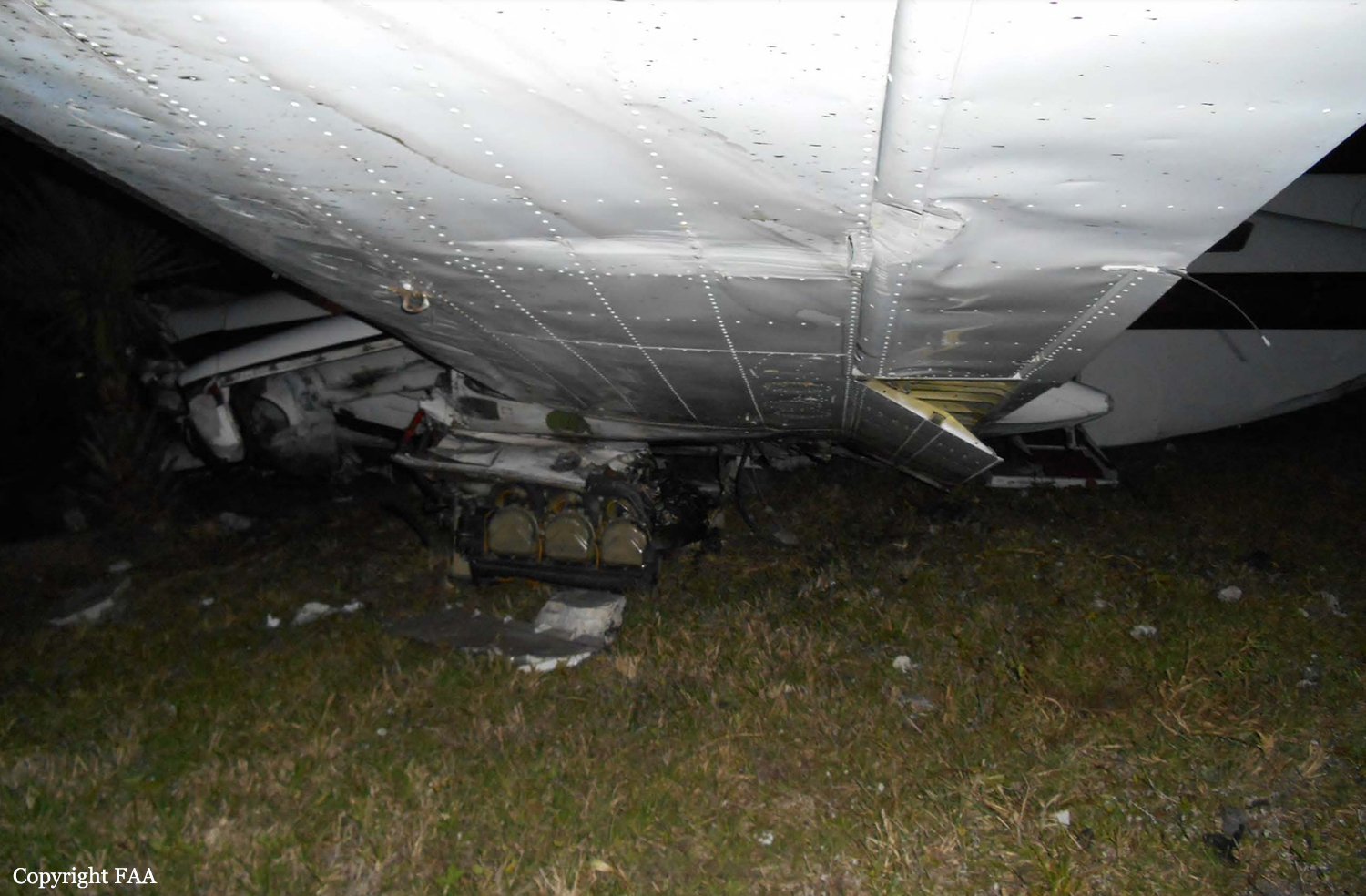
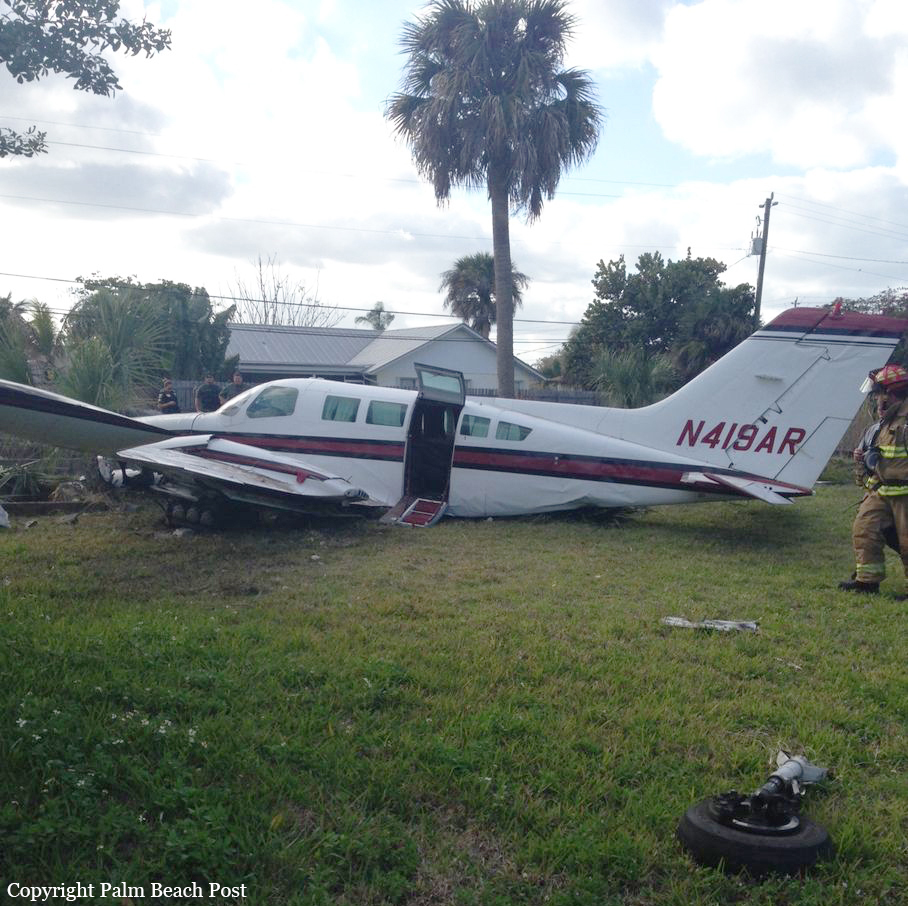
Crash of a Cessna 402C II in Mayaguana: 3 killed
Date & Time:
Apr 4, 2013 at 0100 LT
Registration:
C6-BGJ
Survivors:
Yes
Schedule:
Nassau - Mayaguana
MSN:
402C-0106
YOM:
1979
Crew on board:
2
Crew fatalities:
Pax on board:
0
Pax fatalities:
Other fatalities:
Total fatalities:
3
Circumstances:
On Thursday April 4, 2013 at approximately1:00AM DST (0500 UTC) a fixed wing, twin-engine, Cessna 402C aircraft Bahamas registration C6-BGJ, serial number 402C0106, crashed into obstacles (vehicles) while landing on Runway 06 at Mayaguana International Airport (MYMM), Abraham’s Bay, Mayaguana, Bahamas. The pilot in command stated that on April 3, 2013, he received a call at approximately 9:30PM from the Princess Margaret Hospital requesting emergency air ambulance services out of Mayaguana. The local police on the island was contacted to confirm lighting approval and availability in order to conduct the emergency flight. After confirming lighting arrangements with Nassau Air Traffic Control Services, and obtaining the necessary clearance, the pilot in command, along with a copilot and one passenger, (a nurse), proceeded with the flight to Mayaguana. The flight departed Lynden Pindling International Airport at approximately 1:30PM DST (0330UTC). The destination was Abraham’s Bay, Mayaguana, Bahamas. The pilot in command also reported “about 1 hour and 40 minutes later we arrived at Mayaguana Airport, leveled off at 1500 feet and about 4 miles left base Runway 06, we had the runway in sight via lighting from vehicles.” The crew continued with the landing procedures. The aircraft touch down approximately 300 feet from the threshold on runway 06, the pilot in command reported that prior to the nose gear making contact with the runway “the right wing hit an object (vehicle), causing the aircraft to veer out of control to the right eventually colliding with a second vehicle approximately 300 to 400 feet on the right side (southern) of Runway 06.” The impact of the right wing of the aircraft with the second vehicle, caused the right wing (outboard of the engine nacelle) and right fuel sealed wet wing tank to rupture releasing the aircraft fuel in that wing, which caused an explosion engulfing the vehicle in flames. The force of the impact with the second vehicle caused the right main gear to break away from the aircraft and it was flung ahead and to the left side of the runway approximately 200 feet from the point of impact with the truck. As the right main gear of the aircraft was no longer attached, the aircraft collapsed on its right side, slid onto the gravel south (right) of the runway and somewhere during this process, the nose gear also collapsed. The pilot immediately shut off the fuel valve of the aircraft and once the engines and the aircraft came to a stop, the three occupants evacuated the aircraft. The occupants of the aircraft did not sustain any visible injuries requiring medical attention or hospitalization. However, three (3) occupants of the second vehicle that was struck, were fatally injured. The airplane sustained substantial damages as a result of the impact and post impact crash sequence. The impact with the first vehicle occurred at approximately 427 feet from the threshold of runway 06 and at coordinates 28˚ 22’30”N and 073˚ 01’15’W. The flight was operated on an Instrument Flight Rules flight plan. Instrument Meteorological Conditions (night) prevailed at the time of the accident.
Probable cause:
Breakdown in communication during the planning and execution of an unapproved procedure has been determined to be the probable cause of this accident.
Other contributing factors:
- Use of an unapproved procedure to aid in a maneuver that was critical,
- Too many persons were planning the maneuver and not coordinating their actions,
- Failure of planners of the maneuver to verify whether participants were in the right position,
- Inexperienced persons used in the execution of a maneuver that was not approved,
- Vehicle parked to close to the side of the runway,
- Vehicle left with engine running while parked near the runway.
Other contributing factors:
- Use of an unapproved procedure to aid in a maneuver that was critical,
- Too many persons were planning the maneuver and not coordinating their actions,
- Failure of planners of the maneuver to verify whether participants were in the right position,
- Inexperienced persons used in the execution of a maneuver that was not approved,
- Vehicle parked to close to the side of the runway,
- Vehicle left with engine running while parked near the runway.
Final Report:


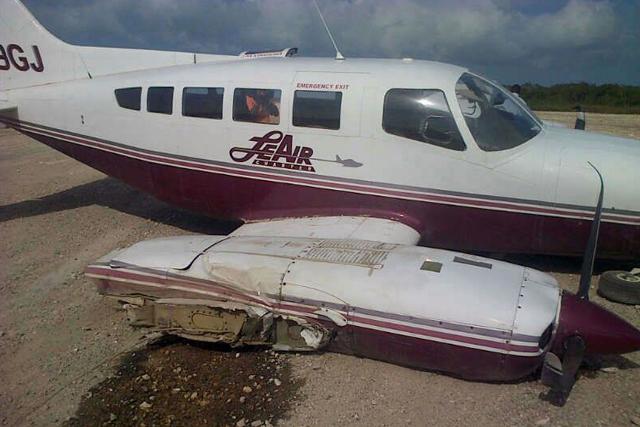
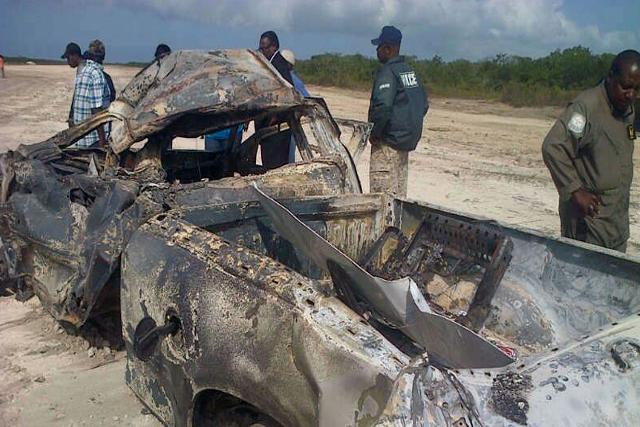
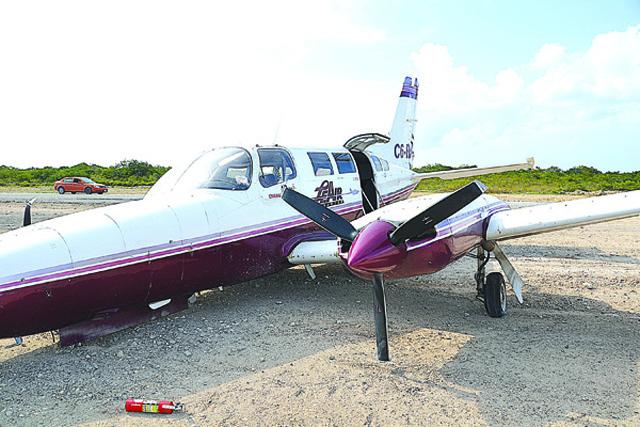

Crash of a Cessna 402B in Rome: 2 killed
Date & Time:
Sep 7, 2012 at 1300 LT
Registration:
I-ERJA
Survivors:
No
Schedule:
Rome - Brescia
MSN:
402B-0918
YOM:
1975
Crew on board:
2
Crew fatalities:
Pax on board:
0
Pax fatalities:
Other fatalities:
Total fatalities:
2
Circumstances:
Shortly after takeoff from Rome-Ciampino Airport, while in initial climb, the twin engine aircraft went out of control and crashed in a car demolition, bursting into flames. The aircraft was totally destroyed by impact forces and a post impact fire as well as more than 30 cars. Both crew were killed.


Crash of a Cessna 402B off Punto Fijo
Date & Time:
Feb 9, 2012 at 1200 LT
Registration:
YV2663
Survivors:
Yes
Schedule:
Valera - Punto Fijo
MSN:
402B-1024
YOM:
1975
Crew on board:
2
Crew fatalities:
Pax on board:
1
Pax fatalities:
Other fatalities:
Total fatalities:
0
Circumstances:
The twin engine aircraft was performing a cargo flight from Valera-Dr. Antonio Nicolás Briceño Airport to Punto Fijo, carrying one passenger, two pilots and a load consisting of valuables. On approach to Punto Fijo-Josefa Camejo Airport, the crew encountered technical problems and ditched the aircraft off the Amuay refinery. The aircraft sank in shallow water and all three occupants took refuge on the roof of the airplane before being rescued few minutes later.
Probable cause:
The failure of the seal of the balance tube on the left engine intake manifold, causing a loss of manifold pressure and then a loss of engine power.
Contributing Factor:
- Discrepancies found with the quality control of the maintenance services performed on the aircraft,
- The non-assertive decisions taken during the flight when the emergency occurred.
Contributing Factor:
- Discrepancies found with the quality control of the maintenance services performed on the aircraft,
- The non-assertive decisions taken during the flight when the emergency occurred.
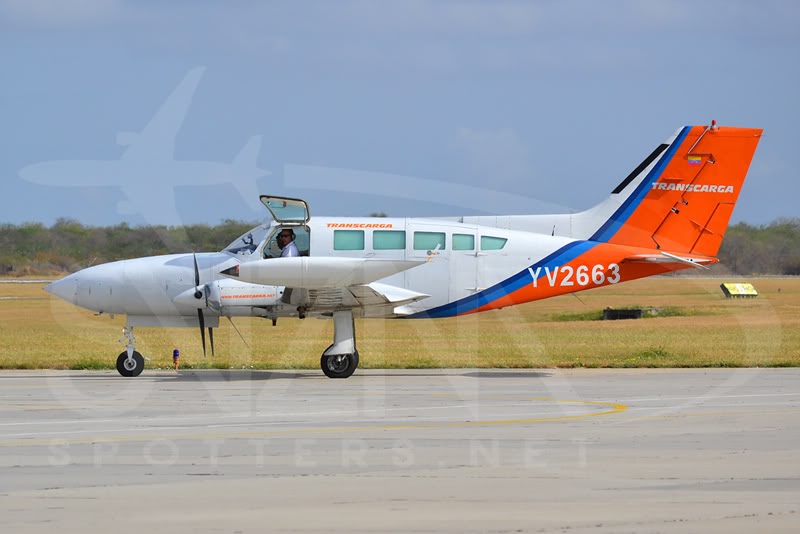
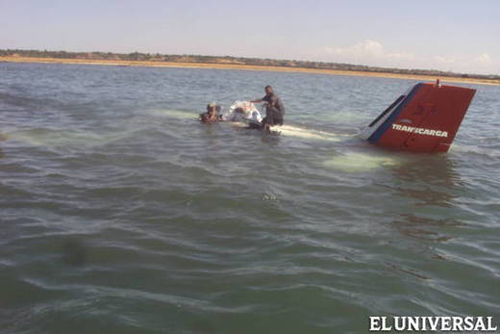
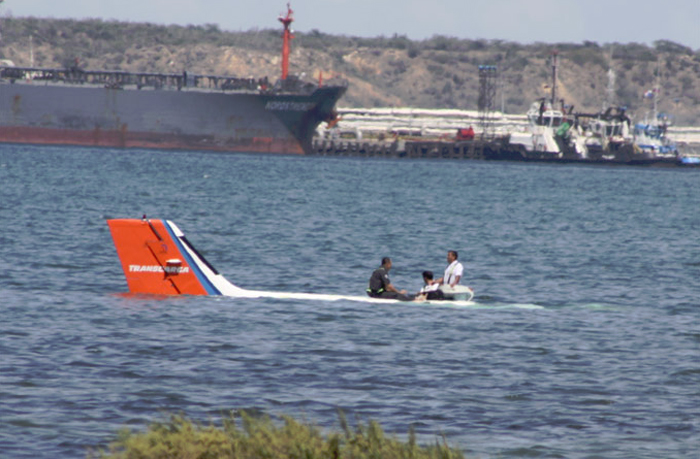
Crash of a Cessna 402B in Biddeford: 1 killed
Date & Time:
Apr 10, 2011 at 1805 LT
Registration:
N402RC
Survivors:
No
Schedule:
White Plains - Portland
MSN:
402B-1218
YOM:
1977
Crew on board:
1
Crew fatalities:
Pax on board:
0
Pax fatalities:
Other fatalities:
Total fatalities:
1
Captain / Total hours on type:
120.00
Aircraft flight hours:
6624
Circumstances:
The multi-engine airplane was being repositioned to its base airport, and the pilot had requested to change the destination, but gave no reason for the destination change. Radar data indicated that the airplane entered the left downwind leg of the traffic pattern, flew at pattern attitude, and then performed a right approximate 250-degree turn to enter the final leg of the approach. During the final leg of the approach, the airplane crashed short of the runway into a house located in a residential neighborhood near the airport. According to the airplane's pilot operating handbook, the minimum multi-engine approach speed was 95 knots indicated airspeed (KIAS), and the minimum controllable airspeed was 82 KIAS. According to radar data, the airplane's ground speed was about 69 knots with the probability of a direct crosswind. Post accident examination of the propellers indicated that both propellers were turning at a low power setting at impact. During a controlled test run of the right engine, a partial power loss was noted. After examination of the throttle and control assembly, two o-rings within the assembly were found to be damaged. The o-rings were replaced with comparable o-rings and the assembly was reinstalled. During the subsequent test run, the engine operated smoothly with no noted anomalies. Examination of the o-rings revealed that the damage was consistent with the o-rings being pinched between the corner of the top o-ring groove and the fuel inlet surface during installation. It is probable that the right engine had a partial loss of engine power while on final approach to the runway due to the damaged o-ring and that the pilot retarded the engine power to prevent the airplane from rolling to the right. The investigation found no mechanical malfunction of the left engine that would have prevented the airplane from maintaining the published airspeed.
Probable cause:
The pilot did not maintain minimum controllable airspeed while on final approach with a partial loss of power in the right engine, which resulted in a loss of control. Contributing to the accident was the partial loss of engine power in the right engine due to the improperly installed o-rings in the engine’s throttle and control assembly.
Final Report:

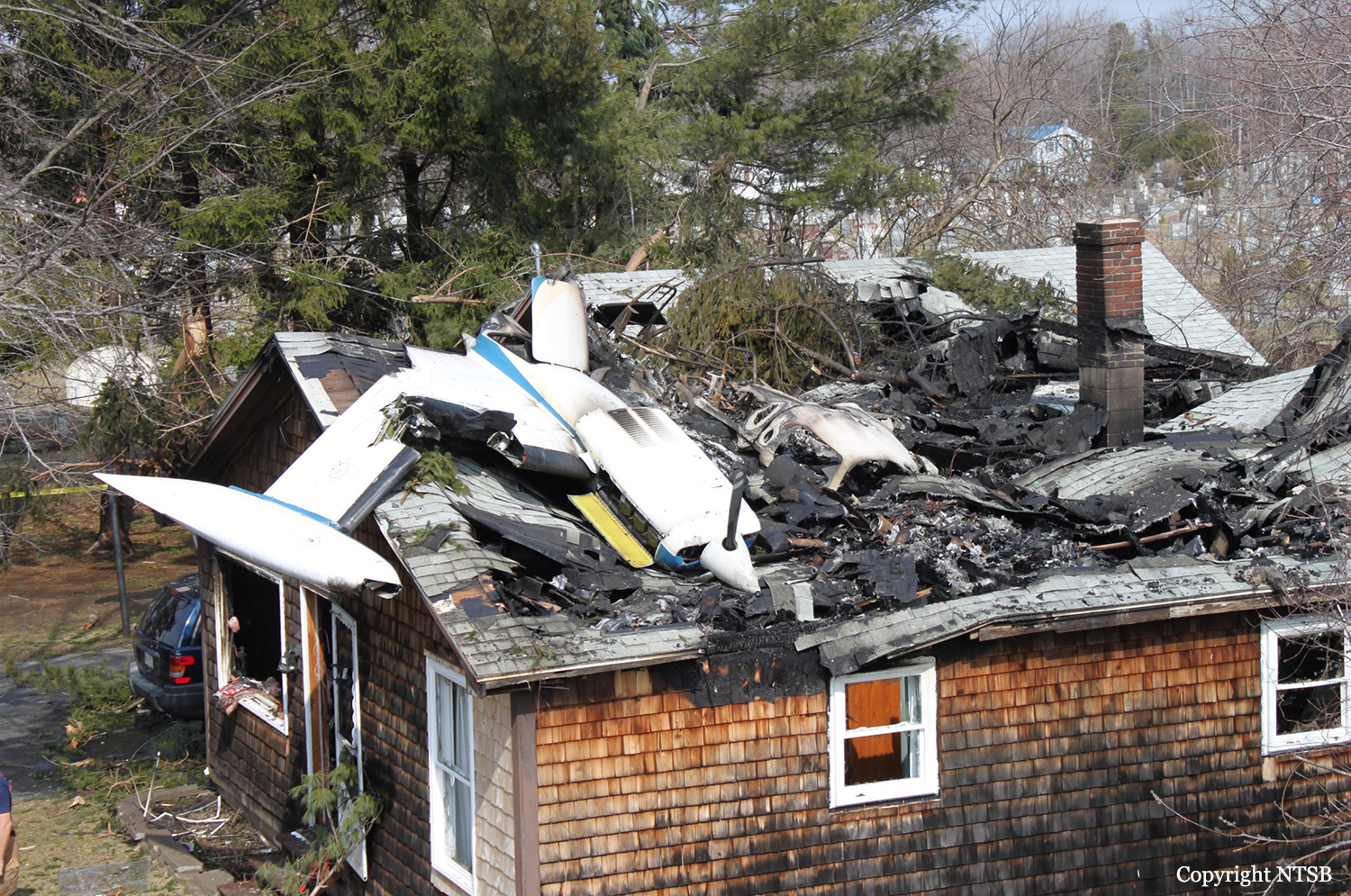
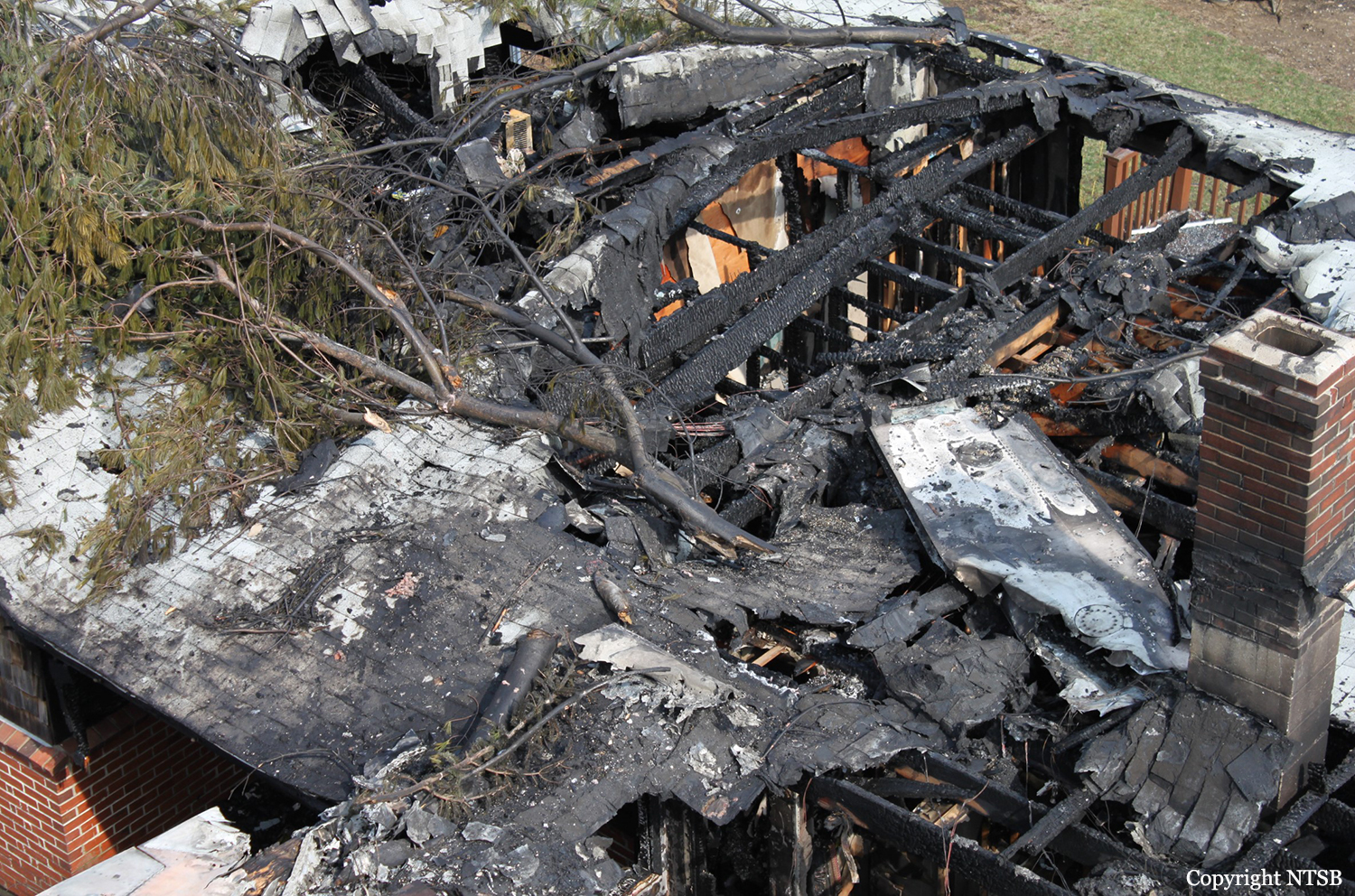
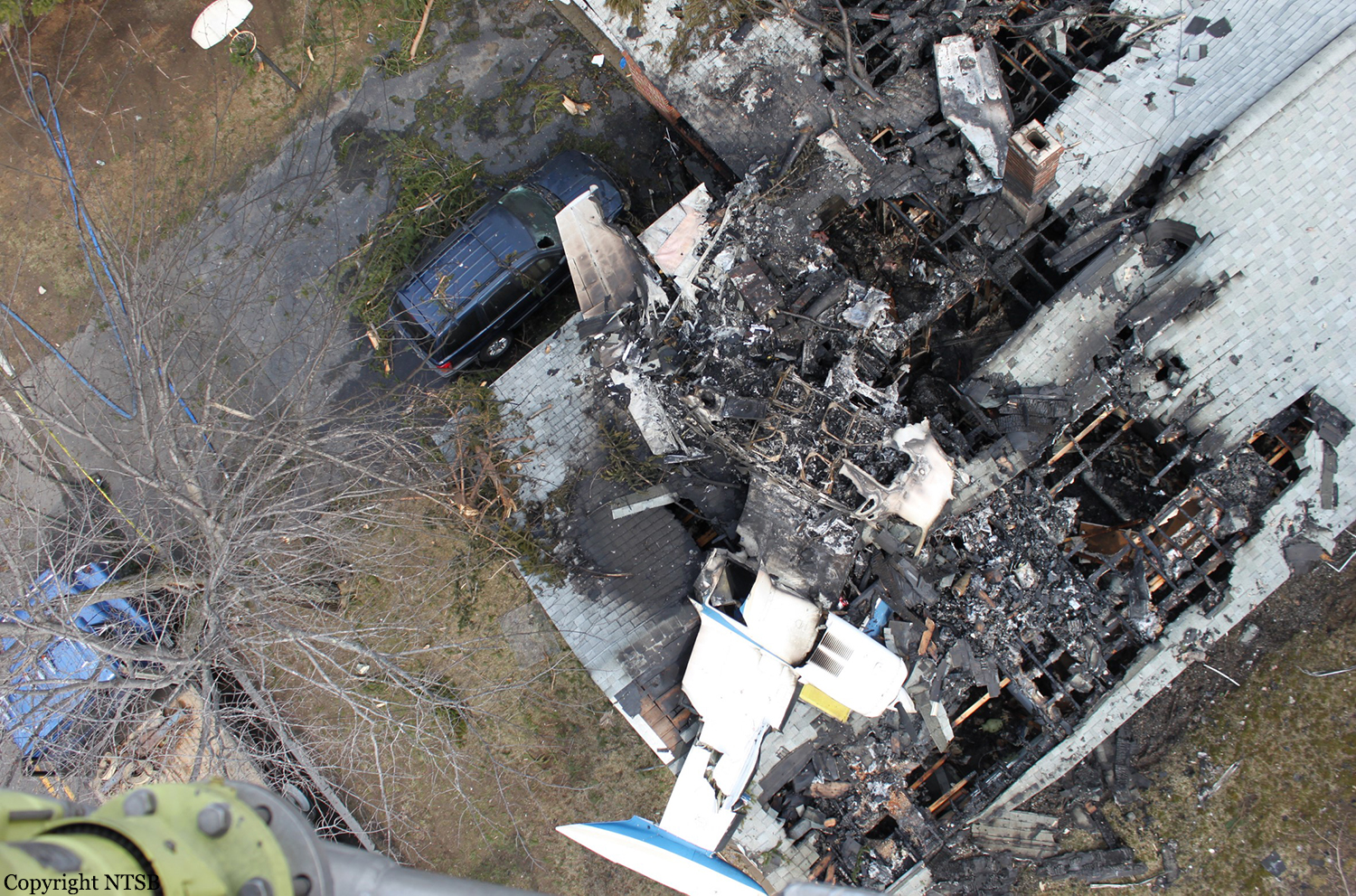
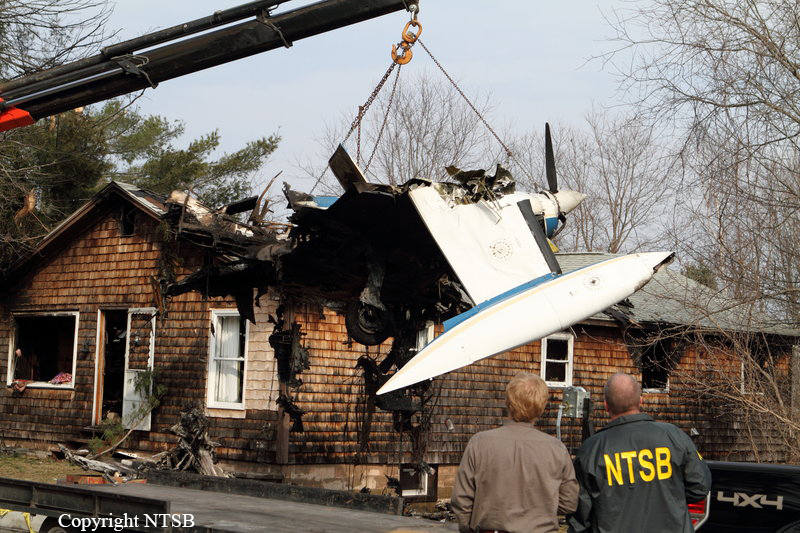
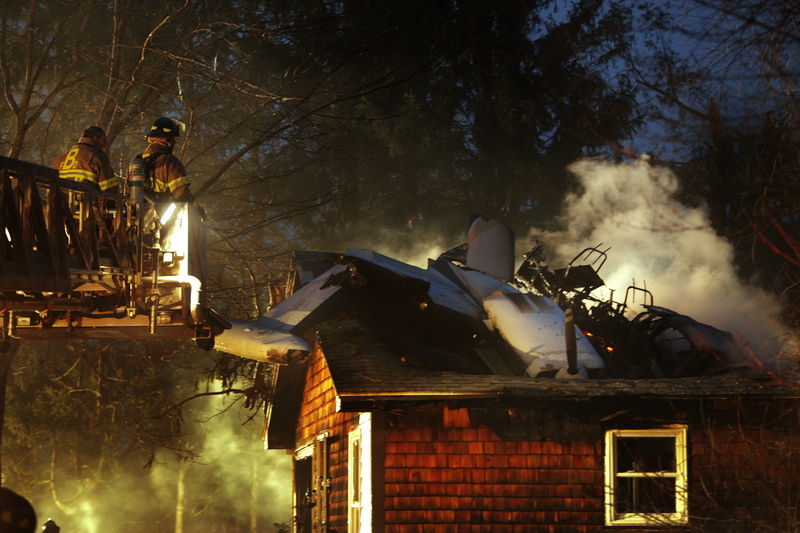
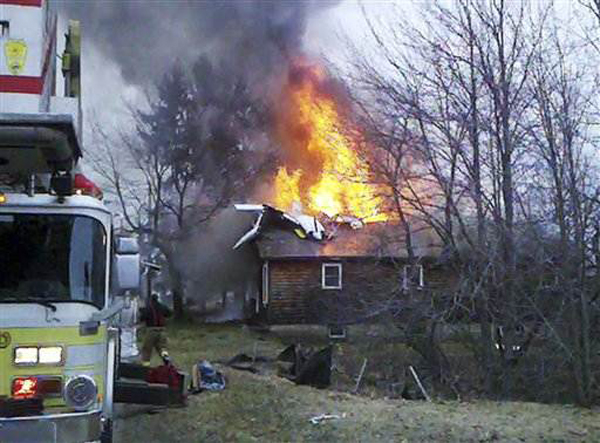
Crash of a Cessna 402C in Nassau: 9 killed
Date & Time:
Oct 5, 2010 at 1236 LT
Registration:
C6-NLH
Survivors:
No
Schedule:
Nassau – Cockburn Town
MSN:
402C-0458
YOM:
1981
Crew on board:
2
Crew fatalities:
Pax on board:
7
Pax fatalities:
Other fatalities:
Total fatalities:
9
Captain / Total hours on type:
10000.00
Circumstances:
On October 5, 2010 about 1636 UTC / 12:36pm Eastern Daylight Time (EDT), C6-NLH a Cessna 402C aircraft registered to Lebocruise Air Limited and operated by Acklins Blue Air Charter/Nelson Hanna crashed into lake Killarney shortly after becoming airborne from runway 14 at Lynden Pindling International Airport, Nassau, New Providence, Bahamas. The airplane sustained substantial damages by impact forces. The pilot, copilot and seven (7) passengers aboard the airplane received fatal injuries. The aircraft was on a passenger carrying flight from Lynden Pindling Intl Airport (MYNN) to Cockburn Town, San Salvador, Bahamas (MYSM). The aircraft was on a visual flight rules flight plan. Visual meteorological conditions prevailed at the time of the accident. The official notification of the accident was made to the Manager of the Flight Standards Inspectorate at Lynden Pindling Intl Airport, Nassau, N. P., Bahamas shortly thereafter. The investigation began the same day at approximately 1655 UTC upon notification of the IIC. The investigation was conducted by the Bahamas Civil Aviation Department [BCAD], Inspector Delvin R. Major (Investigator-in-Charge) of the Air Accident Investigation and Prevention Unit (AAIPU), Management of BCAD and Flight Standards Inspectorate (FSI), Airworthiness Inspectors, Operations Inspectors, Human Factors and other administrative staff. Valuable assistance was also received from the National Transportation Safety Board (NTSB), the Federal Aviation Administration (FAA) and Manufacturers of the aircraft and engine components. Three (3) Air Operator Certificate (AOC) holders at the Domestic Section of Lynden Pindling Intl Airport stated that on the day of the accident flight; one of the victims of the accident aircraft approached each of them individually at different times, requesting a quote and their availability to conduct a charter flight to Cockburn Town, San Salvador, Bahamas. Each AOC holder reported that they declined to conduct the charter because by looking at the amount of luggage and other equipment that accompanied the passengers and the size of the passengers that wanted to travel, in their estimation the combined weight appeared to be in excess of the weight that their respective aircraft (Cessna 402C and Hawker Beechcraft B100) can accommodate. After the AOC holders declined to conduct the charter, sometime thereafter, the same individual that was arranging the flight with the previous AOC holders made contact with Nelson Hanna / Acklins Blue Air Charter where arrangements were made to conduct the charter flight. The aircraft type certificate allowed for the aircraft to be operated by one (1) pilot, but the fatal flight was operated by a crew of two (2) pilots (according to eyewitness reports). The aircraft actual weight and center of gravity was unknown. As far as could be determined, the takeoff weight exceeded the maximum weight allowed of 6,850 pounds by more than 500 pounds. This excess in weight also placed the center of gravity of the aircraft outside of the safe envelope / limits for flight allowed by the manufacturer. The flight crew was given instructions by ATC to taxi from the business aviation apron (Executive Flight Support) for a takeoff on Runway 14 at intersection Foxtrot. (Intersection Foxtrot is 2,000 feet beyond the threshold of Runway 14, with a take-off run available of 9,353 feet. (Runway 14 - 11,353 feet long by 150 feet wide, see Appendix 5.15). According to eyewitness reports, from the initiation of takeoff power up to the point when the aircraft lost control white smoke was observed trailing behind the left engine of the aircraft. Eyewitnesses also reported that the take off appeared normal with gear being retracted shortly after takeoff and the aircraft seemed to be struggling to climb. The aircraft was seen at a low height, turning in a left direction over the lake as if trying to return for a landing at the airport. The bank of the aircraft changed from shallow to very steep to almost perpendicular to the ground, gears were extended and almost immediately the aircraft lost control and nose dived into the lake inverted. It cart wheeled, coming to rest upright, approximately ¼ mile from the approach end of runway 27. The aircraft came to rest on an approximate heading of 210 degrees. Eyewitness also reported hearing the engine run for a few seconds after the aircraft made contact with the water of the lake. There were no reports from the pilot to ATC of an emergency or any abnormalities with the aircraft or its systems after takeoff. The flight plan form filed for this flight listed one (1) soul on board; however, there were 7 additional occupants including a “second pilot” discovered onboard the accident flight the day of the accident. The aircraft's recovery and search for luggage, equipment and additional victims commenced shortly after the accident. This effort however, was hampered by inclement weather, rough lake conditions and darkness. On October 6th, the day after the crash, aircraft recovery continued. Family members of an additional person believed to be on board, advised the authorities that there was a ninth (9th) person on board. Search to recover any additional bodies continued but search and recovery efforts proved fruitless. On October 7th, the second day after the crash, the body of the ninth (9th) victim was found in the marshes and recovered from the southwestern end of the lake in the vicinity of where the fatal crash occurred.
Probable cause:
The following findings were identified:
1. Acklins Blue Air Charter was advertising and operating as a Bahamas air taxi operator without having undergone the certification process in contravention of Bahamas Civil Aviation (Safety) Regulations Schedule 12.
2. The airplane was issued a Certificate of Airworthiness on May 19, 2010, by the Bahamas Flight Standards Inspectorate, and was being operated by Acklins Blue Air Charter.
3. The Cessna 402C aircraft is classified in the performance Group C. This requires rapid feathering of the propeller of a failed engine and the raising of flap and the landing gear in order to achieve maximum climb performance.
4. The airplane maintenance records were not located; therefore, no determination could be made whether the airplane was being maintained in accordance with Bahamas Civil Aviation Regulations.
5. The 12,000 hour pilot and second pilot were not qualified to operate in Bahamas commercial air taxi operations.
6. No determination could be made whether the pilot or second pilot had completed required training and had accomplished a satisfactory recurrent flight check of their flying ability as required by CASR Schedule 12 and 14 for aircraft operating in commercial air transportation as well as the stipulation by the insurance policy.
7. Post-accident weight and balance calculations indicate the airplane was being operated approximately 523 pounds over maximum certificated takeoff weight (6,850 lb)
8. The pilot was advised by an air traffic controller that white smoke was trailing the left engine during takeoff; the pilot did not declare an emergency or advise the controller of any engine failure or mechanical abnormality.
9. The airplane's left engine could not produce rated shaft horsepower during takeoff.
10. Several factors contributing to the degradation of the airplane's performance and its inability to maintain flight include the wind-milling propeller, the pilot's intentional initiation of a steep turn to return to the departure airport, and his intentional lowering of the landing gear during the turn to return.
11. While turning to return, the airplane stalled, pitched nose down, and impacted in a lake.
12. The search and rescue efforts were timely and appropriate; however, the lack of accurate information on the pilot submitted flight plan delayed recovery of all victims.
13. The left propeller was not feathered.
14. The No. 2 cylinder of the left engine failed due to fatigue that originated in the root of the cylinder head thread that was engaged with the first thread on the barrel.
15. Post-accident inspection of the cockpit revealed several switches for the right engine were secured; however, no determination could be made when the switches were placed / moved in those positions.
16. No evidence of failure of the airplane's structures or flight control system contributed to the accident.
17. Existing regulations did not require the aircraft to be fitted with flight recorders. The lack of any recorded data about the aircraft's performance or the flight crew conversations deprived the investigation team of essential factual information.
18. Current Civil Aviation Department personnel and budget resources may not be sufficient to ensure that the quality of surveillance for certified as well as uncertified air carrier operations will improve.
19. Airside access procedures are inadequate at Fixed Base Operators. Access to the secure airside occurring without any check of individuals to challenge whether they have a legitimate reason for accessing the secure airside. FBO door to access airside is not secured or locked continuously; persons observed walking in and out without being challenged.
20. Flight Plan Forms are being accepted and transmitted to ATC with incomplete information. This information is vital for search and rescue purposes.
21. Weather was not a factor in the accident.
22. ATC was not a factor in the accident.
23. Currently flight plans for private flights are only required for international operations.
24. The pilot was aware of discrepancy associated with the manifold pressure reading of the left engine prior to takeoff. This discrepancy was brought to his attention by a client from the flight immediately preceding the accident flight.
25. The exact center of gravity of the accident airplane could not be calculated accurately as no indication of what seat each passenger occupied in the airplane and no indication of where luggage or equipment were placed on the aircraft could be determined. However, due to the exceedance of weight limits the aircraft was already outside the allowable center of gravity envelope developed by the manufacturer.
26. The pilot had insufficient time to prepare for the approach to runway 27 before beginning the approach. The airplane pitched up quickly into a stall, after extension of gear, recovery before ground impact was unlikely once the stall began.
27. Post accident inspection did not reveal any mechanical evidence or problems with the right hand engine.
28. The pilot's decision to return to the airfield was reasonable. Once the aircraft began to lose height a return to the airfield became impractical and a forced landing in the direction of flight should have been attempted.
29. The right propeller was never recovered from the lake.
The following causal factors were identified:
1. The left engine suffered a mechanical failure of the #2 cylinder, and therefore could not produce rated shaft horsepower. No indication of total loss of power with the left engine reported.
2. Right Engine electrical and engine control switches were found in the “OFF” position, therefore the aircraft was incapable of climbing on the power of one engine alone.
3. The excess weight above the maximum weight allowed for takeoff may have been an important factor in the aircraft's inability to gain adequate altitude after takeoff.
4. The pilot secured the right engine which was mechanically capable of producing power resulting in a total loss of thrust. He then sometime thereafter initiated a steep turn with gear down and the left engine already not developing sufficient shaft horsepower to sustain lift.
5. The pilot attempted to return to the departure airfield but lost control of the aircraft during a turn to the left.
1. Acklins Blue Air Charter was advertising and operating as a Bahamas air taxi operator without having undergone the certification process in contravention of Bahamas Civil Aviation (Safety) Regulations Schedule 12.
2. The airplane was issued a Certificate of Airworthiness on May 19, 2010, by the Bahamas Flight Standards Inspectorate, and was being operated by Acklins Blue Air Charter.
3. The Cessna 402C aircraft is classified in the performance Group C. This requires rapid feathering of the propeller of a failed engine and the raising of flap and the landing gear in order to achieve maximum climb performance.
4. The airplane maintenance records were not located; therefore, no determination could be made whether the airplane was being maintained in accordance with Bahamas Civil Aviation Regulations.
5. The 12,000 hour pilot and second pilot were not qualified to operate in Bahamas commercial air taxi operations.
6. No determination could be made whether the pilot or second pilot had completed required training and had accomplished a satisfactory recurrent flight check of their flying ability as required by CASR Schedule 12 and 14 for aircraft operating in commercial air transportation as well as the stipulation by the insurance policy.
7. Post-accident weight and balance calculations indicate the airplane was being operated approximately 523 pounds over maximum certificated takeoff weight (6,850 lb)
8. The pilot was advised by an air traffic controller that white smoke was trailing the left engine during takeoff; the pilot did not declare an emergency or advise the controller of any engine failure or mechanical abnormality.
9. The airplane's left engine could not produce rated shaft horsepower during takeoff.
10. Several factors contributing to the degradation of the airplane's performance and its inability to maintain flight include the wind-milling propeller, the pilot's intentional initiation of a steep turn to return to the departure airport, and his intentional lowering of the landing gear during the turn to return.
11. While turning to return, the airplane stalled, pitched nose down, and impacted in a lake.
12. The search and rescue efforts were timely and appropriate; however, the lack of accurate information on the pilot submitted flight plan delayed recovery of all victims.
13. The left propeller was not feathered.
14. The No. 2 cylinder of the left engine failed due to fatigue that originated in the root of the cylinder head thread that was engaged with the first thread on the barrel.
15. Post-accident inspection of the cockpit revealed several switches for the right engine were secured; however, no determination could be made when the switches were placed / moved in those positions.
16. No evidence of failure of the airplane's structures or flight control system contributed to the accident.
17. Existing regulations did not require the aircraft to be fitted with flight recorders. The lack of any recorded data about the aircraft's performance or the flight crew conversations deprived the investigation team of essential factual information.
18. Current Civil Aviation Department personnel and budget resources may not be sufficient to ensure that the quality of surveillance for certified as well as uncertified air carrier operations will improve.
19. Airside access procedures are inadequate at Fixed Base Operators. Access to the secure airside occurring without any check of individuals to challenge whether they have a legitimate reason for accessing the secure airside. FBO door to access airside is not secured or locked continuously; persons observed walking in and out without being challenged.
20. Flight Plan Forms are being accepted and transmitted to ATC with incomplete information. This information is vital for search and rescue purposes.
21. Weather was not a factor in the accident.
22. ATC was not a factor in the accident.
23. Currently flight plans for private flights are only required for international operations.
24. The pilot was aware of discrepancy associated with the manifold pressure reading of the left engine prior to takeoff. This discrepancy was brought to his attention by a client from the flight immediately preceding the accident flight.
25. The exact center of gravity of the accident airplane could not be calculated accurately as no indication of what seat each passenger occupied in the airplane and no indication of where luggage or equipment were placed on the aircraft could be determined. However, due to the exceedance of weight limits the aircraft was already outside the allowable center of gravity envelope developed by the manufacturer.
26. The pilot had insufficient time to prepare for the approach to runway 27 before beginning the approach. The airplane pitched up quickly into a stall, after extension of gear, recovery before ground impact was unlikely once the stall began.
27. Post accident inspection did not reveal any mechanical evidence or problems with the right hand engine.
28. The pilot's decision to return to the airfield was reasonable. Once the aircraft began to lose height a return to the airfield became impractical and a forced landing in the direction of flight should have been attempted.
29. The right propeller was never recovered from the lake.
The following causal factors were identified:
1. The left engine suffered a mechanical failure of the #2 cylinder, and therefore could not produce rated shaft horsepower. No indication of total loss of power with the left engine reported.
2. Right Engine electrical and engine control switches were found in the “OFF” position, therefore the aircraft was incapable of climbing on the power of one engine alone.
3. The excess weight above the maximum weight allowed for takeoff may have been an important factor in the aircraft's inability to gain adequate altitude after takeoff.
4. The pilot secured the right engine which was mechanically capable of producing power resulting in a total loss of thrust. He then sometime thereafter initiated a steep turn with gear down and the left engine already not developing sufficient shaft horsepower to sustain lift.
5. The pilot attempted to return to the departure airfield but lost control of the aircraft during a turn to the left.
Final Report:
